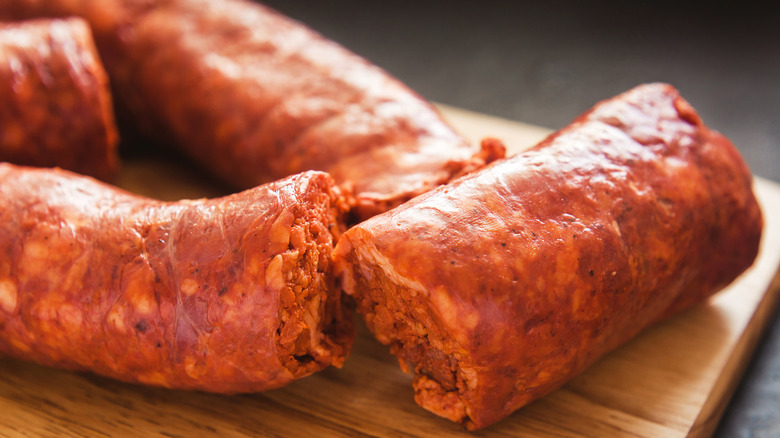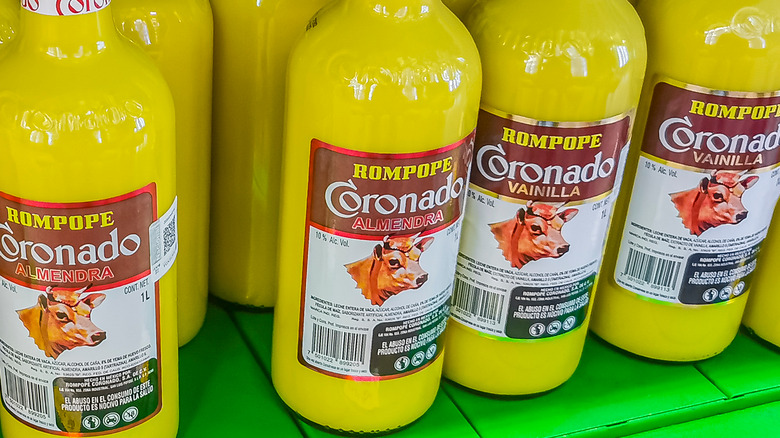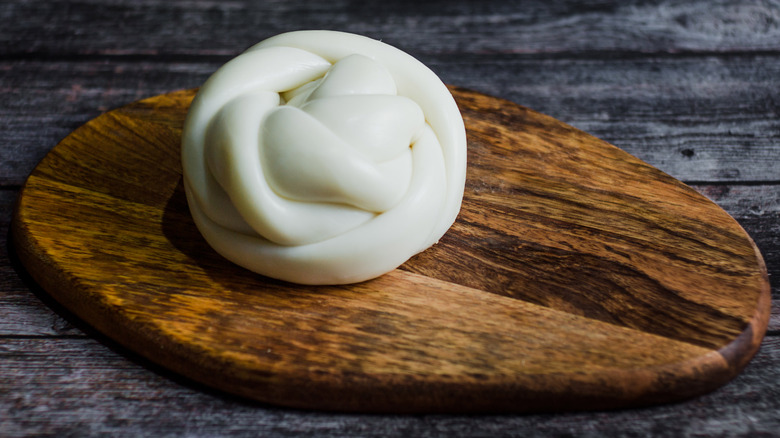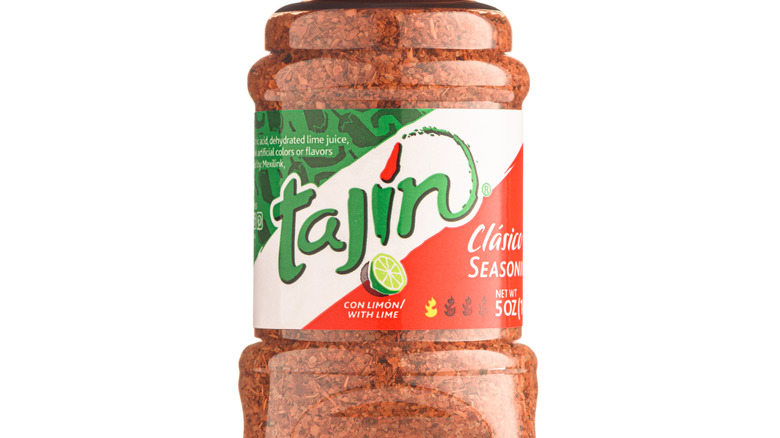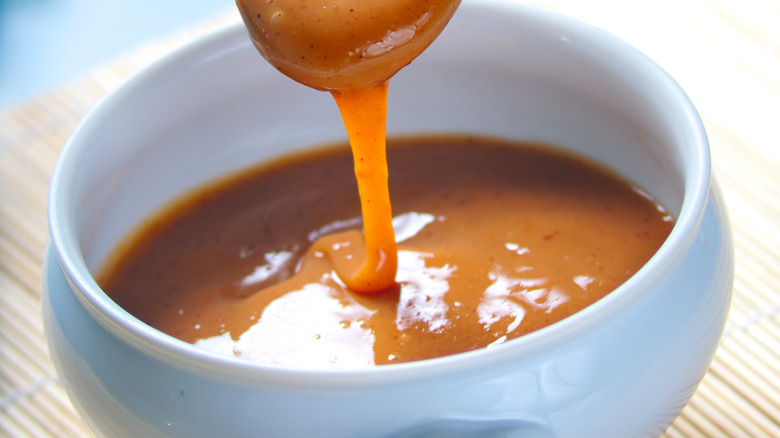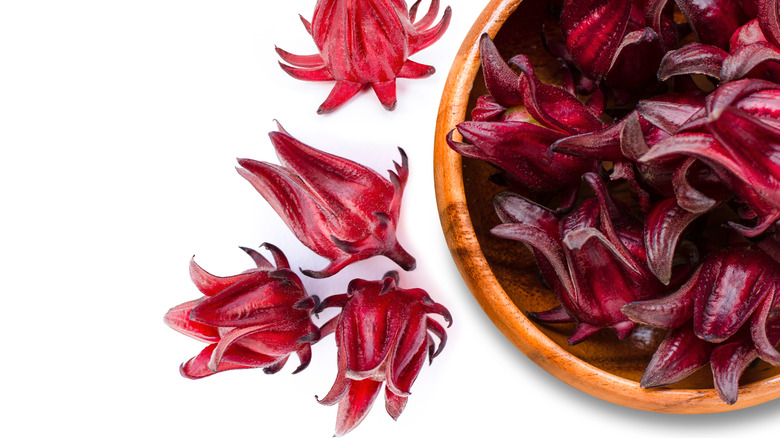Why TikTok Is So Jealous Of Mexico's Costco Offerings
Costco envy: the state of coveting your neighbor's inexpensive, high-quality foodstuffs, home goods, seasonal products, or extraordinarily large supply of snacks, despite differences in lifestyle and actual preferences. Also, the unease that comes with believing those who have a great Costco located near their homes have access to superior products and, therefore, lifestyle. See also: food envy, shopping binge, membership bias.
Costco envy is a thing – it afflicts jealous shoppers who aren't ready and willing to pull the trigger on that annual membership, but the struggle is even more real for many members as well. Some products are seasonal or simply not available at your local big box establishment (though they might be easy to get where your friends live — how wrong is that?). Those who live in places with tough blue laws know the longing for inexpensive alcoholic finds that require crossing state borders to obtain. But now there is another border that may be worth traveling across in pursuit of food pleasure: it's time to go south, to Costco Mexico to get some of your favorite things. And if you've never heard of some of these items, you don't know what you're missing — but you will soon. TikToker aryamngrls recently shared a video that is letting the world know about some of what Mexico's Costcos have to offer — but only to its card — and peso — carying members.
Jumbo-sized chorizo means you'll never have to go without again
The Sevillanas brand chorizo found at Mexican Costco is the true giant of the sausage world in every sense. If you've never had Mexican chorizo, you are in for a treat. The Mexican type is different from its Spanish cousin. While both are very flavorful, heavily-spiced pork products, Spanish chorizo is your charcuterie-board sausage — cured, hard, paprika-laden, and requiring no cooking. Mexican chorizo has a softer side; it's a fresh sausage made up of ground pork and pork fat, and chock-full of red pepper.
Most importantly, Mexican chorizo needs to be cooked, and it gives a rich flavor boost to other foods that is unmistakable. Once you discover Mexican chorizo, you may want to add it to a lot of things ... obvious things like tacos, tortas, or nachos, or to add flavor to chili (per Cooking Channel), or even in your scrambled eggs (via Food 52). The chorizo available at Mexican Costco is massive – its very size demonstrates the many marvelous ways in which chorizo can be incorporated into your favorite foods.
Rompope: it's not just for Christmas anymore
If you think people love their Costco seasonal favorite nog in the U.S., it's time you met rompope, Mexico's version of eggnog. It's so popular that people drink it year-round (via Sweet Life). Like American eggnog, rompope includes milk, eggs, and sugar, but it also incorporates an almond base that gets beaten into the rest, resulting in the addition of some deeply fragrant notes to the creamy, boozy concoction. The drink has a great backstory, too.
Tradition places its roots in the 16th century, when indigenous and Spanish cuisines were first coming together to form what is now Mexican cuisine (via Gourmet de Mexico). By the 17th century, the Santa Clara convent in Puebla had become a culinary hotspot. The Poor Clare nuns there were known for their fine hospitality and impressive cooking skills (per Gourmet de Mexico) and had quite a way with after-dinner punches. Since even the earliest version of the beverage contained alcohol, only one sister was originally allowed to taste it. A nun by the name of Eduviges was so accomplished in crafting the beverage that her version was adopted (and adapted) as the standard. Legend has it that Eduviges died without sharing her key secret ingredient, which has been the cause of speculation ever since (via El Universal Puebla). But that unknown element hasn't affected rompope's popularity, and both homemade and store-bought versions abound. Rompope is often served for birthdays or other celebrations, typically over ice.
The aisles of Mexican cheese
Costco in Mexico also sells an enormous variety of Mexican cheese (in enormous sizes, too, obviously — it's Costco!). If you're not so familiar with authentic Mexican food, you may not realize how important cheese is in Mexico. But if you're Mexican (or just know and love Mexican cuisine), you know how important the dairy product is to Mexican homes and hearts — and there are so many varieties to choose from! So it's no surprise that Mexican Costco should have numerous kinds of cheese for purchase.
Mexican cheeses run the gamut (via Quesada): There are cheeses for sprinkling on top of things like queso fresco, queso añejo, and cotija; there are soft cheeses for eating on their own or using as filling – Chihuahua and Requesón come to mind. There are also cheeses ideally suited for filling quesadillas, such as queso de Oaxaca and queso asadero. Then there are the cheeses perfect for simple sandwiches and snacking, like Manchego and Panela. And there are even cheeses for dolloping on top of your food, sour cream style: Mexican crema is the quintessential choice for this (per Masterclass). Hungry? Time to head to Costco — provided you've got your passport handy, that is.
Tajín seasoning makes everything better
Is there anything that isn't better with Tajín, one of Mexico's most popular seasonings? While Tajín doesn't boast the long history of many other beloved Mexican foods (the company was founded in 1985), that's no matter to most Mexicans. Tajín can be seen nationwide, a fact that reflects more than wishful thinking in the company's advertising; most would agree with one of Tajín's famous commercials in declaring that "Tajín va con todo" – Tajín goes with everything (via YouTube). The product's label reads "salsa in polvo" — salsa in powder form — and it can be used in an extraordinary range of dishes (per República and Tajín's own website).
Tajín is essentially a flavored salt. It features a mild spice kick and a citrusy punch, due to the chile and lime that are added to the saline flavor base. While it's most obvious in savory dishes, it ups the umami ante on fresh, sweet things, like fruit — it's particularly popular on tropical or summer fruits like mango, pineapple, melon, and stone fruits. But for many, Tajín is much more than just a seasoning. Mexican food historian and LA Times author Gustavo Arellano explained (per the New York Times) that is a "lifestyle." Culinary consultant Mariana Gómez Rubio said she "couldn't imagine a time before there was Tajín, or before chile-lime salt" (via the New York Times). Popular may be an understatement. Best of all, Mexico's Costcos are where you'll find the treasured spice blend in bulk.
Cajeta: the sweet caramel spread you need now
What's another one of the key finds at Mexican Costcos? Giant jars of cajeta. Of what? Cajeta is a creamy, golden, caramelly spread that can be compared to dulce de leche. But where dulce de leche is made with cow's milk, cajeta uses goat milk. That might not seem like much of a difference — certainly doesn't sound like an advantage in the flavor department (especially when it comes to a sweet treat), but Serious Eats explains why it matters.
Goat milk is higher in the key proteins that provide for a lot of the best aroma and depth of flavor; goat milk allows the development of savory elements (without going towards sweet and sour) since it's higher in key amino acids and lower in the acid that provides sour flavor notes than cow's milk (if you really want to know, it all hinges on the Maillard reaction). Plus, its unique protein profile helps stabilize heat levels, so it doesn't need to be watched as carefully as cow's milk while you're cooking it (in case you get inspired and decide to try to make it yourself like Serious Eats or the Washington Post). All this translates to an unctuous topping you need to savor — if you can get your hands on it.
A flor by any other name: hisbiscus by the pound
Flores de Jamaica (also just called "Jamaica") are very popular in Mexico, so it's no surprise that Costco sells them in very large packages, especially since they're already trending heavily these days. In the English-speaking world, "Jamaican flowers" are usually known as sorrel in the Caribbean (per Epicurious), or hibiscus here in the states. The most common use for hibiscus is in beverages, both "infusiones" (herbal teas) and "aguas frescas" (sweetened juicy water, much lower in fruit content than their regular juice counterparts, per República, and served very cold).
To make hibiscus tea, the flowers are steeped in hot water for several minutes and then strained out. The resulting beverage is nicely tart and refreshing. It's also a healthy option, as hibiscus flowers are high in antioxidants and can lower blood pressure (per El Universal and Gastrolab). More inventive uses of the edible flowers are also starting to crop up (via El Poder del Consumidor). It doesn't hurt that the flowers are stunning in their own right and make a great visual impact in cocktails, in addition to their flavor punch (via Bon Appétit).
And as if all these amazing foods weren't enough, Mexican Costcos also have the most beautiful artisan-style paper products — some of which have been designed to look just like Mexican Talavera tile (per Mexico Destinos). Suffice to say we're feeling the Mexican Costco Envy in a big way. Or should we say envidia?

